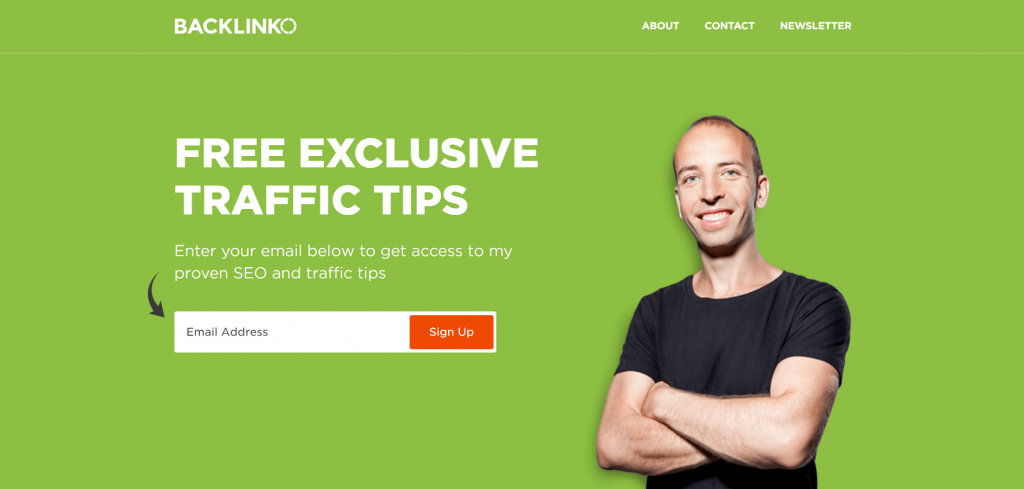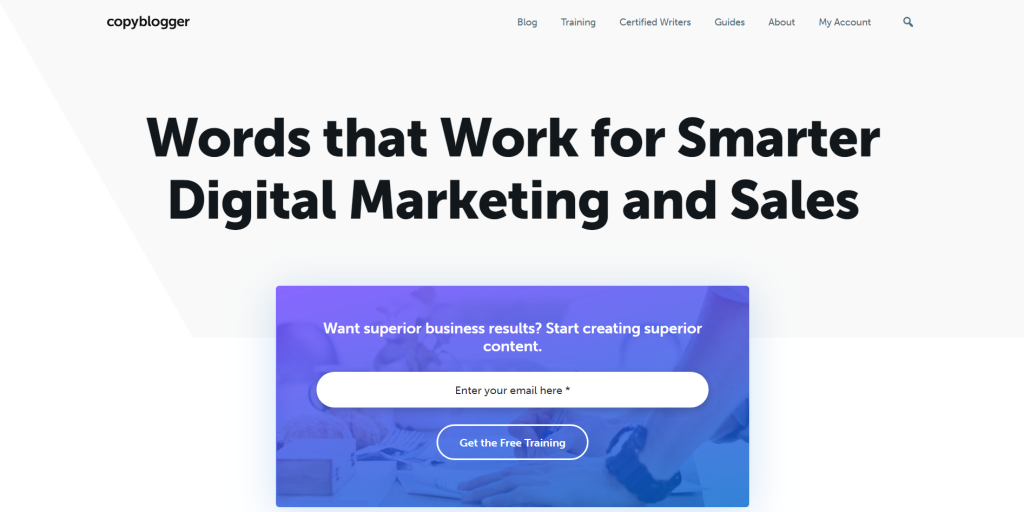How Do Advertisers Use The Principles Of Persuasion
Back in 1984, Dr. Robert B. Cialdini wrote a book called Influence: The Psychology of Persuasion. Since then, it's been widely hailed equally a seminal volume on marketing—something everyone in conversion optimization should read.
The most significant aspects of this tome were Cialdini's "half-dozen Principles of Influence," which are:
- Reciprocity;
- Delivery/consistency;
- Social proof;
- Authority;
- Liking;
- Scarcity.
More than three decades after the volume's publication, its vi principles have been adapted to Cyberspace marketing, too, peculiarly the business of conversion rates.
This makes sense: Conversions are all about persuasions. When a user casually visits your website, you want to plough them into a shopper, and then a buyer.
In the world of conversions, every piddling scrap of persuasion counts. Hither's how you tin apply Cialdini's six Principles of Persuasion to boost conversions.
ane. Reciprocity: Requite a little something to get a lilliputian something in return.
Cialdini's first principle of persuasion states that human beings are wired to return favors and pay dorsum debts—to treat others equally they've treated us.
The thought of reciprocity says that people, by nature, feel obliged to provide discounts or concessions to others if they've received favors from those same people. Psychology explains this by stressing that humans simply hate to feel indebted to others!
Allow's say that you're running a pop blog that offers readers highly actionable and practical information to improve their lives. All of this information is offered for free to site visitors.
Based on the thought of reciprocity, your blog makes site visitors more likely to feel obligated to buy something from your site, providing you lot with an eventual conversion.
Example of reciprocity
One of the best examples of this Cialdini principle in action is the Brian Dean's website, Backlinko. Dean's website is centered on his blog, which is single-mindedly focused on giving its readers tips, advice, and suggestions on how they can be more than successful webmasters and SEO analysts.

Thanks to his very informative content, regular site visitors are more than probable to sign up for his (paid) training courses or contact him for consulting services.
ii. Commitment: People desire their beliefs to be consistent with their values.
The principle of commitment declares that humans have a deep demand to be seen every bit consistent. As such, in one case nosotros've publicly committed to something or someone, we're much more likely to go through and deliver on that delivery (hence, consistency).
From a psychological perspective, this can exist explained by the fact that people have aligned commitment with their self-paradigm. Marketers, of form, have figured out how to utilise this second Cialdini principle to obtain greater conversion rates.
By getting site visitors to commit to something relatively pocket-size (and usually free), similar a guide or whitepaper, they increase the likelihood that those site visitors will eventually come across themselves as customers. That change in self-perception makes it easier to follow up with an offer for a paid product or service. (This is like to the "foot in the door" technique.)
Example of commitment
A striking and memorable example of this Cialdini principle in action tin be constitute on the Copyblogger website. Copyblogger is the brainchild of Brian Clark. While information technology's a pop blog, information technology'south really a software and training arrangement that sells content marketing software through Copyblogger Media.
Correct on the homepage, you'll notice a big headline urging you to catch the company'due south costless online marketing grade. Just enter your email address:

Clearly, this is a form of public commitment meant to get you to encounter yourself equally a client of the company. It'll raise the chances that y'all'll go on to purchase one of their services.
Cialdini defined social proof as people doing what they notice other people doing. It's rubber in numbers.
For instance, if our coworkers work late, we're likelier to practice the same. If a item eatery is always full of people, we're likelier to requite that institution a effort.
We're even more influenced by this principle if:
- Nosotros're unsure of ourselves.
- The people we observe seem similar to u.s..
Social psychology is rife with experiments that illustrate this unavoidable, human miracle, but a classic one is this 1960s lift experiment:
Basically, whatever the majority of people do in an elevator, an individual who joins the group will copy.
For case, if the grouping looks to the back of the elevator, the individual will do the aforementioned, fifty-fifty if it looks funny. Virtually people reject to recall or behave independently.
One of the most powerful means to use social proof is through and then-chosen "wisdom-of-the-crowds." Accept Modcloth. Their product pages include not just reviews just also a counter that tallies the number of site visitors who accept "hearted" a particular particular:

A previous tactic by the retailer allowed shoppers to vote on which styles they thought should be put into production. Such styles were awarded a "Be the Buyer" bluecoat, which doubled the charge per unit of conversion charge per unit compared to items with no bluecoat.
Always wonder why we a tendency to obey authorization figures, even if they're objectionable and enquire others to commit objectionable acts? Information technology's human nature!
Accessories, such equally job titles (east.yard. Dr.) and uniforms, infuse an air of authority, making the boilerplate person more than likely to take what that person says. You can see this in commercials that, for example, use doctors to front end their advertisement campaigns.
Case of potency
ShoeDazzle, which specializes in women's shoes and accessories, relies on this principle. The company was co-founded past Kim Kardashian, who also serves as i of ShoeDazzle's master fashion stylists.
Even though the company was besides founded by serial entrepreneur Brian S. Lee and attorney Robert Shapiro, that wasn't going to assist ShoeDazzle concenter conversions. For the target demographic—young women obsessed with shoes—Lee and Shapiro aren't authority figures.
That's why the company brought in Kardashian as a co-founder. She's an say-so figure for young women shoppers.
v. Liking: The more than you lot like someone, the more yous'll be persuaded by them.
What does it matter if you lot similar someone? According to Cialdini, information technology affects the chances of you lot being influenced by that individual. Welcome to Cialdini principle number five: liking. Liking is based on sharing something similar or a more than superficial interest, similar concrete bewitchery.
This principle can exist applied to conversions in the following way: A company that wants to boost conversion rates should create a peachy "Well-nigh Us" page.
That sounds absurd, but it makes sense when you sympathize that a visitor'south "About U.s." folio is an opportunity to tell potential buyers about the similarities between its staff and site visitors. Since similarity is a key edifice block of liking, an effective "About Us" page is vital.
Let'south take a look at a instance study.
Example of liking
This case written report centers on a visitor called PetRelocation. They help pet owners all over the world motility their pets from country to country.
The company's "Most Us" page is full of staff bios, and every bio emphasizes not only the staff's dear of dogs, only likewise humanizes managers and employees by including hobbies and other personal details.

The attempt increased the company'due south likeability, which in plow boosted the conversion rate of site visitors.
Some businesses succeed with the liking principle on a g scale. Richard Branson'south Virgin Group is liked past millions of loyal consumers who savour its mobile phone service (Virgin Mobile) and airline (Virgin Atlantic), among other businesses.
six. Scarcity: When yous believe something is in brusque supply…You desire it more than!
Here we are, at the end of Cialdini's administrative list of persuasion principles. Scarcity is the perception that products are more attractive when their availability is limited.
We're likelier to purchase something if we're informed that it's the "last 1" or that a "special deal" volition soon elapse. In short, we detest to miss out, and that fear is a powerful motivator to encourage us to act quickly.
Examples of scarcity
Scarcity is one of the almost popular Cialdini principles. Companies use it over and over again to boost conversions. This is a common tactic on travel booking sites:

Booking.com employs the scarcity principle in many means:
- "You missed it! We reserved our concluding available room at this property."
- "Our availability in Dublin is low on your dates – lock in a great price before information technology's besides tardily."
- "Today 45% off."
- "v people are looking right now."
- "In high demand – just 4 rooms left on our site!"
At that place'south also "time-limited scarcity." Monetate has a great example of this principle. A blurb that reads, "Offer Ends in…, " with a inaugural resulted in an average order value (AOV) increase of 0.07%.
While a tiny increase, for this large online retailer, that small-scale margin in AOV proved to be a "million-dollar campaign." (Read more here.)
Simply be careful: Never use fake scarcity—made-up claims of limited supplies or expiring discounts. Your site visitors volition see right through y'all.
Conclusion
These 6 Principles of Influence have been used for decades by businesses and marketers to get you lot, the consumer, to role with your hard-earned coin. Since the explosion of ecommerce, Cialdini'southward half-dozen principles have been adopted in that location, too.
Pay shut attending to these principles. Learn what they're about and how to employ them to your website. Don't be afraid to give your potential customers a complimentary sample or ii, and definitely tell them if your products won't exist available for much longer or at sure prices.
Used properly, yous'll enjoy a boost in your conversions. Act now—before it'due south too late!
Update: Cialdini has since published a 7th principle: Unity.
How Do Advertisers Use The Principles Of Persuasion,
Source: https://cxl.com/blog/cialdinis-principles-persuasion/
Posted by: shellenbargerjuplage.blogspot.com


0 Response to "How Do Advertisers Use The Principles Of Persuasion"
Post a Comment